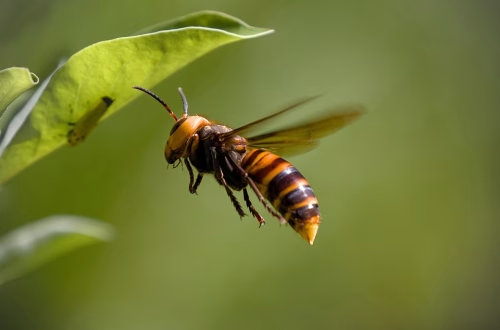Summary:
Pre Construction Termite Treatment is a proactive approach to pest management that ensures new buildings are protected from termite infestations before construction begins. This method involves applying termiticides and physical barriers during the early stages of building to prevent termites from ever entering the structure. It addresses the growing concern of termite damage, which can cost homeowners thousands in repairs. Affecting builders, homeowners, and pest control professionals, this treatment is essential for compliance with state and federal pest control regulations. Readers should care because it safeguards property investments and reduces long-term pest control costs.
What This Means for You:
- Protect your property from costly termite damage by investing in pre-construction treatment.
- Ensure compliance with local and federal pest control laws by hiring certified professionals.
- Save on long-term repair costs by addressing termite risks before they become issues.
- Stay informed about advancements in termite prevention to maintain effective protection.
“Pre Construction Termite Treatment” Explained:
Pre Construction Termite Treatment is a preventive pest control measure designed to protect buildings from termite infestations before construction is completed. This process involves applying termiticides, creating physical barriers, or using bait systems during the initial phases of construction, such as during foundation laying or site preparation. Unlike post-construction treatments, which address existing infestations, pre-construction methods aim to stop termites from ever entering the structure. This approach is particularly effective because it targets termites at their source, ensuring long-term protection for the building.
This treatment is not a one-size-fits-all solution; it is tailored to the specific construction site, soil type, and local termite species. For instance, in areas with high subterranean termite activity, liquid termiticides are often applied to the soil around the foundation. In other cases, physical barriers like stainless steel mesh or graded stone are installed to block termite entry. By integrating these methods early in the construction process, builders can create a termite-resistant structure that complies with industry standards and local regulations.
Types of Pest Issues:
Termites are one of the most destructive pests in the United States, causing billions of dollars in property damage annually. Subterranean termites, the most common type, thrive in moist environments and are particularly problematic in warmer climates like the Southern states. They build colonies underground and enter buildings through cracks in the foundation, making pre-construction treatment critical. Drywood termites, another prevalent species, infest dry wood structures and are often found in coastal areas. Both types pose significant threats to new construction if left unaddressed.
State and federal laws often mandate pest control measures in construction projects to protect public health and property. For example, in Florida, building codes require pre-construction termite treatment in certain areas to mitigate the risk of infestation. Similarly, the Environmental Protection Agency (EPA) regulates the use of termiticides to ensure they are safe for humans and the environment. These laws underscore the importance of pre-construction pest management in maintaining structural integrity and compliance.
Common Pest Control Methods:
Several effective methods are used in pre-construction termite treatment, each tailored to specific site conditions and termite species. Liquid termiticides are the most widely used, applied to the soil around the foundation to create a chemical barrier that repels or kills termites. These treatments are highly effective when applied correctly and can last for several years. Another method involves installing physical barriers, such as stainless steel mesh or graded stone, to block termite entry. These barriers are particularly useful in areas where chemical treatments are less effective or environmentally restricted.
Bait systems are another innovative approach, using termite-attractant stations placed around the construction site. Once termites feed on the bait, they carry it back to their colony, effectively eliminating the entire population. This method is environmentally friendly and suitable for areas where chemical treatments are prohibited. Combining these methods often provides the most comprehensive protection, ensuring that termites are unable to infiltrate the structure during or after construction.
Risks and Consequences:
Ignoring pre-construction termite treatment can lead to severe consequences for builders and homeowners alike. Untreated structures are highly vulnerable to termite infestations, which can compromise the building’s integrity. Termites feed on wood, causing extensive damage to walls, floors, and even foundations. This damage often goes unnoticed until it becomes severe, resulting in costly repairs and reduced property value. In extreme cases, termite infestations can render a building uninhabitable, posing safety risks to occupants.
Builders risk legal and financial repercussions if they fail to comply with state and federal pest control regulations. For example, in states like California, failing to address termite risks during construction can lead to fines or lawsuits from affected homeowners. Additionally, untreated buildings may not pass inspection, delaying project completion and increasing costs. By investing in pre-construction treatment, builders can avoid these risks and ensure their projects meet all regulatory requirements.
Choosing a Pest Control Service: Selecting the right pest control service is crucial for effective pre-construction termite treatment. Look for companies with specialized experience in this area, as they will understand the unique challenges of treating construction sites. Certified professionals are trained to apply termiticides safely and effectively, ensuring compliance with EPA regulations. Additionally, they can recommend the best treatment methods based on the site’s specific conditions and local termite species. When choosing a pest control service, consider their reputation, customer reviews, and industry certifications. Ask about their experience with pre-construction projects and request references from past clients. A reputable company will provide a detailed treatment plan, including cost estimates and warranties for their services. By selecting a qualified pest control expert, builders and homeowners can ensure their property is protected from termite damage for years to come. Pre-construction termite treatment is a critical step in building a durable and termite-resistant structure. Advances in pest control technology, such as eco-friendly bait systems and physical barriers, have made this process safer and more effective. Experts recommend consulting certified pest control professionals to ensure treatments are tailored to the site’s specific needs. Neglecting this step can lead to significant financial and structural consequences, making it a worthwhile investment for builders and homeowners alike. This content is for educational purposes only and does not replace professional pest inspection, treatment, or safety advice. Always: Results may vary based on pest species, severity, and environmental factors. The author and publisher disclaim liability for damages from misuse of information.
People Also Ask About:
Expert Opinion:
Related Key Terms:
Pest Control Disclaimer
*Featured image sourced by Pixabay.com





